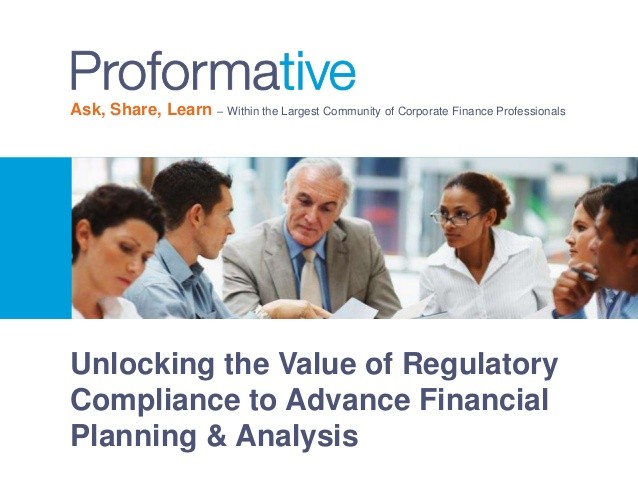FRB Regulation U Compliance Guide
Post on: 21 Июнь, 2015 No Comment

Compliance Guide to Small Entities
Regulation U: Credit by Banks or Persons other than Brokers or Dealers for the Purpose of Purchasing or Carrying Margin Stocks
12 CFR 221
This description should not be interpreted as a comprehensive statement of the regulation. Rather, it is intended to give a broad overview of the regulation’s requirements. The full regulation is available on the Government Printing Office web site.
Regulation U sets out certain requirements for lenders, other than securities brokers and dealers, who extend credit secured by margin stock. Margin stock includes any equity security registered on a national securities exchange, such as the New York Stock Exchange or the American Stock Exchange ; any over-the-counter (OTC) security trading in the Nasdaq Stock Market’s National Market; any debt security convertible into a margin stock; and most mutual funds. The regulation covers entities that are not brokers or dealers, including commercial banks, savings and loan associations, federal savings banks, credit unions, production credit associations, insurance companies, and companies that have employee stock option plans.
Regulation U has covered securities credit extended by commercial banks since 1936. Two significant events occurred in 1968 and 1998. First, in 1968 the Federal Reserve Board adopted Regulation G to cover securities credit extended by lenders other than banks, brokers, and dealers. Regulation G was merged into Regulation U in 1998. Second, in 1968 the Board received the authority to publish a list of OTC stocks that were subject to Regulation U to the same extent as exchange-traded stocks. In 1998, the Board ceased publication of its OTC list in favor of reliance on the listing standards for the Nasdaq Stock Market’s National Market.
A general description of the regulation, by section, follows.
Section 221.1 Authority, purpose, and scope
States that the regulation imposes credit restrictions on persons, other than brokers or dealers, that extend credit for the purpose of buying or carrying margin stock if the credit is secured directly or indirectly by that stock or any other margin stock.
Section 221.2 Definitions
Defines key terms used in the regulation. Four terms are highlighted here:
Margin stock is any equity security trading on a national securities exchange; any OTC security trading in the Nasdaq Stock Market’s National Market; any debt security convertible into a margin stock or carrying a warrant or right to subscribe to or purchase a margin stock; any warrant or right to subscribe to or purchase a margin stock; or any security issued by an investment company registered under section 8 of the Investment Company Act of 1940 (with certain exceptions).
Indirectly secured includes any arrangement with a customer under which (1) the customer’s right or ability to sell, pledge, or otherwise dispose of margin stock owned by the customer is in any way restricted while the credit remains outstanding or (2) the exercise of such right is or may be cause for accelerating the maturity of the credit.
Purpose credit is any credit for the purpose, whether immediate, incidental, or ultimate, of buying or carrying margin stock.
Maximum loan value is the percentage of current market value assigned by the Board under section 221.7 (the supplement) to specified types of collateral. The maximum loan value of margin stock is stated as a percentage of its current market value and has been set at 50 percent since 1974. Options, including puts, calls, and combinations thereof, have no loan value, unless they are publicly traded. Publicly traded options qualify as margin stock. All other collateral has good faith loan value.
Section 221.3 General requirements
States that no lender shall extend any purpose credit, secured directly or indirectly by margin stock, in an amount that exceeds the maximum loan value of the collateral securing the credit. However, a lender may continue to maintain any credit initially extended in compliance with the regulation regardless of a reduction in the customer’s equity resulting from a change in market price or a change in the status of the security securing an existing purpose credit. In addition, no lender may arrange for the extension of any purpose credit, except upon the same terms and conditions under which the lender itself may extend purpose credit.
The borrower and the lender may be required to complete the form G-3 or U-1 statement of purpose for each extension of credit.
A commercial bank is always subject to Regulation U when it extends credit secured by margin stock. A nonbank lender becomes subject when it meets one of two threshold tests for the amount of margin-stock-secured credit extended or outstanding—specifically, if $200,000 or more in such credit was extended in the most recent calendar quarter; or if at any time in the most recent quarter the amount of margin-stock-secured credit outstanding was $500,000 or more.
A nonbank lender must register with the Federal Reserve Bank in whose District it is located by filling out and submitting form G-1 (available by calling the local Federal Reserve Bank or via the Board’s web site ) within thirty days of the end of the calendar quarter in which one of the two threshold tests is met and must file annual reports (form G-4 ) thereafter. Form G-1 is a simple four-page form that requires the registrant-lender to provide the following information:
- Name of registrant
- Address of registrant
- Principal lines of business
- Form of business (corporation or partnership, for example)
- Names of personnel responsible for maintaining records regarding the regulation
- Purpose of credit extended
- Balance sheet

Section 221.4 Employee stock option, purchase, and ownership plans
States that a company or its affiliate (known as a plan-lender) may extend credit without regard to the margin requirements to its employees to purchase company stock under an eligible employee stock option, purchase, or ownership plan. In addition, any nonbank lender may extend purpose credit to an employee stock ownership plan (ESOP) qualified under section 401 of the Internal Revenue Code without regard to the margin requirements of Regulation U. A similar exemption for bank loans to ESOPs is found in section 221.6.
If the lender is a nonbank lender extending credit under this section, it must still comply with the registration requirements and file annual reports, but it need not obtain the statement of purpose for each extension of credit.
Section 221.5 Special-purpose loans to brokers and dealers
Provides exemptions from the 50 percent maximum loan value limitations of Regulation U if the borrower is a broker or dealer and the loan meets one of the specific exemptions.
Section 221.6 Exempted transactions
Stipulates that a bank may extend and maintain purpose credit without regard to the 50 percent loan value limitations of Regulation U if such credit is extended to any bank, any foreign banking institution, an ESOP, or any plan-lender.
Section 221.7 Supplement: Maximum loan value of margin stock and other collateral
States that the maximum loan value of any margin stock is 50 percent of its current market value. The maximum loan value of nonmargin stock and all other collateral except options is its good faith loan value. An option has no loan value unless it is traded on an exchange, in which case it qualifies as margin stock.
The following paragraphs review key aspects of Regulation U:
What responsibilities does a lender take on once it registers with a Federal Reserve Bank as a nonbank lender?
Regulation U has three important post-registration requirements for nonbank lenders:
- The nonbank lender must obtain from the borrower, and complete, a purpose statement (form G-3 ) for each loan secured by margin stock.
- The nonbank lender must adhere to margin requirements (currently 50 percent) for purpose loans secured by margin stock.
- The nonbank lender must file an annual report of margin-stock-secured lending (form G-4 ) as of each June 30.
What are the responsibilities of a bank lender under Regulation U?
Regulation U has two important requirements for bank lenders:
- The bank lender must obtain from the borrower, and complete, a purpose statement (form U-1 ) for each loan secured by margin stock if the loan exceeds $100,000.
- The bank lender must adhere to margin requirements (currently 50 percent) for all purpose loans secured by margin stock.
What is a nonpurpose loan under Regulation U?
A nonpurpose loan is a loan made for any purpose other than purchasing or carrying margin stock.
What are the requirements of Regulation U for a nonpurpose loan?
If the loan is secured directly or indirectly by margin stock, form G-3 or form U-1 must be completed as described above. If the loan is not secured directly or indirectly by margin stock, no form need be completed. Regulation U places no restriction on the amount of credit that may be extended on nonpurpose loans secured by margin stock.
What are forms G-3 and U-1?
Forms G-3 and U-1 are often referred to as purpose statements. Each is a two-page form wherein the borrower must disclose (1) the use to which the loan proceeds will be put, (2) the amount of the loan, and (3) the collateral for the loan. The collateral need not be listed for nonpurpose loans. The form must be signed by both the borrower and the lender. The form is not filed with the Federal Reserve, but it must be kept in the lender’s records for at least three years after the termination of the credit.
What is a plan-lender?














